L'aereo - Messerschmitt Bf109-E - Myouth - Ricordi degli anni '70
Menu principale:
L'aereo - Messerschmitt Bf109-E
Modellismo > Aerei > Messerschmitt Bf109-E
Messerschmitt Bf109 E
E' un modello Airfix che ho costruito negli anni '70-'80. E' sempre stato in una vetrinetta così si è conservato al meglio!
It's an Airfix kit I built in the '70-'80ies. It has always been stored in a glass window, so it survived these many years!
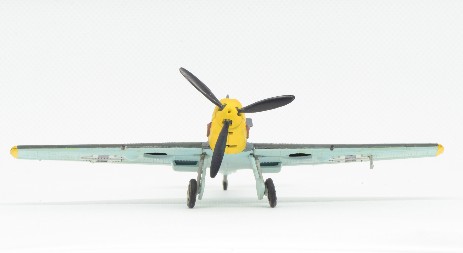
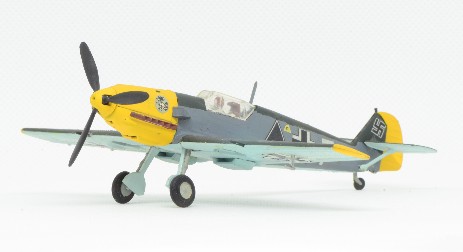
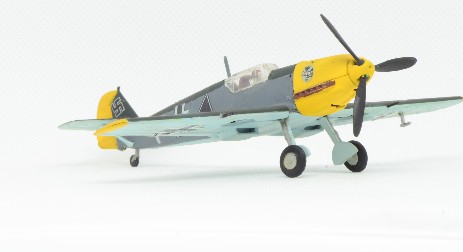
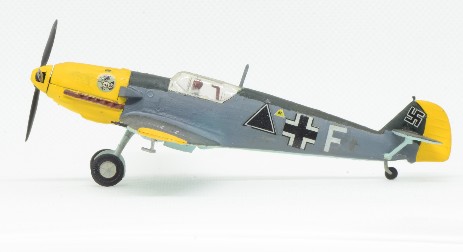
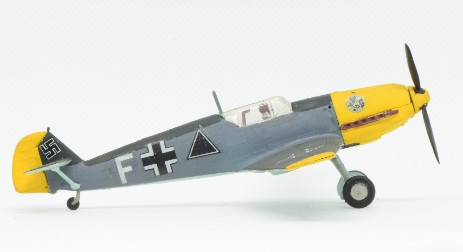
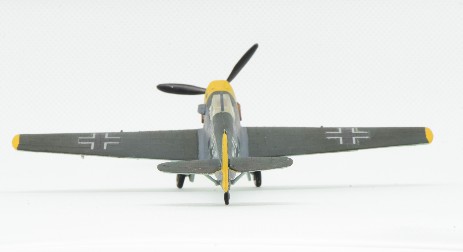
Pilota dell'aereo riprodotto: Adolf Galland
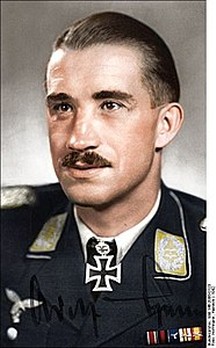
Nazionalità: Germania
Armata: Luftwaffe
Stormo: Jagdegschwader 26
Reparto:III/ Jg 26
Anno: Dicembre 1940
Il pilota, Adolf Galland

Quando lo ho costruito: negli anni '70-'80
Messerschmittt Bf-109
Il Messerschmitt Bf 109, fu un aereo da caccia monomotore, monoplano ad ala bassa progettato negli anni trenta dall'ing. Willy Messerschmitt, per conto dell'azienda aeronautica tedesca Bayerische Flugzeugwerke AG e prodotto, oltre che dalla stessa e dalla Messerschmitt AG che gli successe, anche su licenza in alcune sue varianti dalla romena Industria Aeronautică Română (IAR) e dalla spagnola Hispano Aviación che lo commercializzò come Hispano Aviación HA-1109.
Il modello è uno dei più noti caccia tedeschi della seconda guerra mondiale e uno degli aerei da combattimento costruiti nel maggior numero di esemplari nella storia (oltre 33 000 dal 1936 al 1945), prestando servizio tra il 1937 e il 1947. Fino al 1941 fu in pratica l'unico apparecchio da caccia della Luftwaffe, dopodiché venne sempre più affiancato dal Focke-Wulf Fw 190. Originariamente concepito come intercettore, si rivelò adattabile e versatile tanto da essere impiegato in numerosi ruoli: cacciabombardiere, caccia notturno, ricognitore, aereo cacciacarri, ecc. La sua struttura era progettata in modo da adattarsi facilmente a continui aggiornamenti e miglioramenti e l'apparecchio era ancora competitivo nel 1945, a oltre 10 anni dalla sua progettazione in un'epoca di continui progressi aeronautici.
È stato l'aereo dei maggiori assi dell'aviazione mondiale, da Erich Hartmann (il pilota da caccia di maggior successo della storia, con 352 aerei abbattuti) a Hans-Joachim Marseille, accreditato del più alto numero di vittorie aeree (158) sul fronte occidentale di cui 151 in Africa. È stato pilotato anche dai più grandi assi di altre forze aeree, come quella finlandese, ungherese, rumena e croata. Fu anche l'unico tipo di velivolo impiegato dal Jagdgeschwader 52 (JG 52), il reparto aereo più vittorioso dellastoria dell'aviazione.
Nella bibliografia di settore il modello viene citato anche con la sigla Me 109, prefisso assegnato in seguito alla Messerschmitt dal Reichsluftfahrtministerium (RLM), specie nelle sue ultime varianti. La sigla Bf assegnata dal ministero indicava la ragione sociale dell'azienda originaria responsabile della progettazione, sviluppo e produzione dei primi esemplari, la Bayerische Flugzeugwerke, che nel luglio 1938 venne rinominata Messerschmitt AG. I modelli progettati da allora in poi assunsero la denominazione Me, mentre quelli progettati in precedenza (comprese le varianti, vedi anche il Messerschmitt Bf 110) continuarono ad adottare ufficialmente il prefisso Bf. Anche se il prefisso Me è stato effettivamente utilizzato nella documentazione Luftwaffe per identificare il 109, questo è da ritenersi non ufficiale.
Per maggiori informazioni, vedere la pagina del BF109-F2
Fonte: Wikipedia
Messerchmitt Bf109
The Messerschmitt Bf 109 is a German World War II fighter aircraft that was, along with the Focke-Wulf Fw 190, the backbone of the Luftwaffe's fighter force.The Bf 109 first saw operational service in 1937 during the Spanish Civil War and was still in service at the dawn of the jet age at the end of World War II in 1945.It was one of the most advanced fighters of the era, including such features as all-metal monocoque construction, a closed canopy, and retractable landing gear. It was powered by a liquid-cooled, inverted-V12 aero engine. From the end of 1941, the Bf 109 was steadily being supplemented by the Focke-Wulf Fw 190. It was commonly called the Me 109, most often by Allied aircrew and among the German aces, even though this was not the official German designation.
It was designed by Willy Messerschmitt and Robert Lusser who worked at Bayerische Flugzeugwerke during the early to mid-1930s. It was conceived as an interceptor, although later models were developed to fulfill multiple tasks, serving as bomber escort, fighter-bomber, day-, night-, all-weather fighter, ground-attack aircraft, and reconnaissance aircraft. It was supplied to several states during World War II, and served with several countries for many years after the war. The Bf 109 is the most produced fighter aircraft in history, with a total of 33,984 airframes produced from 1936 to April 1945.
The Bf 109 was flown by the three top-scoring German fighter aces of World War II, who claimed 928 victories among them while flying with Jagdgeschwader 52, mainly on the Eastern Front. The highest-scoring fighter ace of all time was Erich Hartmann, who flew the Bf 109 and was credited with 352 aerial victories. The aircraft was also flown by Hans-Joachim Marseille, the highest-scoring German ace in the North African Campaign who achieved 158 aerial victories (in about a third of the time). It was also flown by several other aces from other Axis nations, notably the Finn Ilmari Juutilainen, the highest-scoring non-German ace. Pilots from Italy, Romania, Croatia, Bulgaria, and Hungary also flew the Bf 109. Through constant development, the Bf 109 remained competitive with the latest Allied fighter aircraft until the end of the war.
A significant portion of Bf 109 production originated in Nazi concentration camps, including Flossenbürg, Mauthausen-Gusen, and Buchenwald.
For mor info, please look at the page regarding BF109-F2
Source: Wikipedia
L'aereoporto ove operava: Chièvres (Belgio)
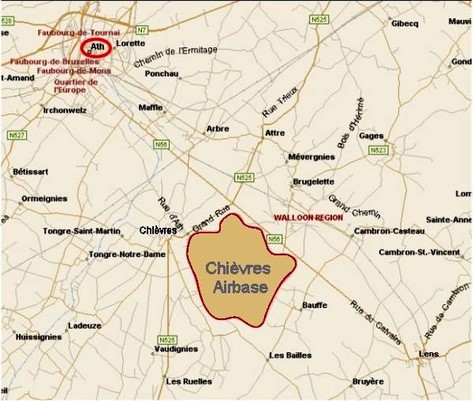

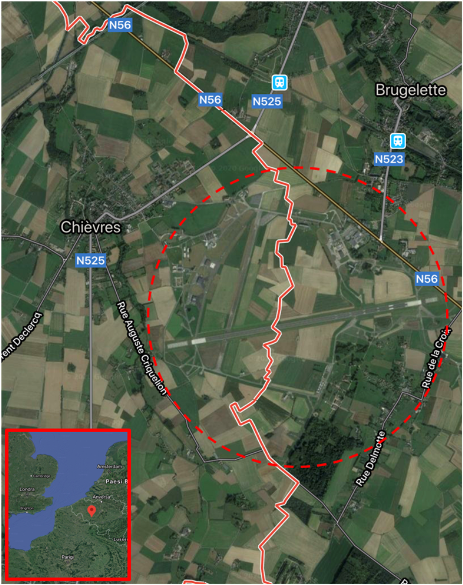
Home Page | Modellismo | Topolini | Altri Disney | Linus | Asterix | Diabolik | Giornalini di guerra | Western | Riviste | Romanzi | Mappa generale del sito
